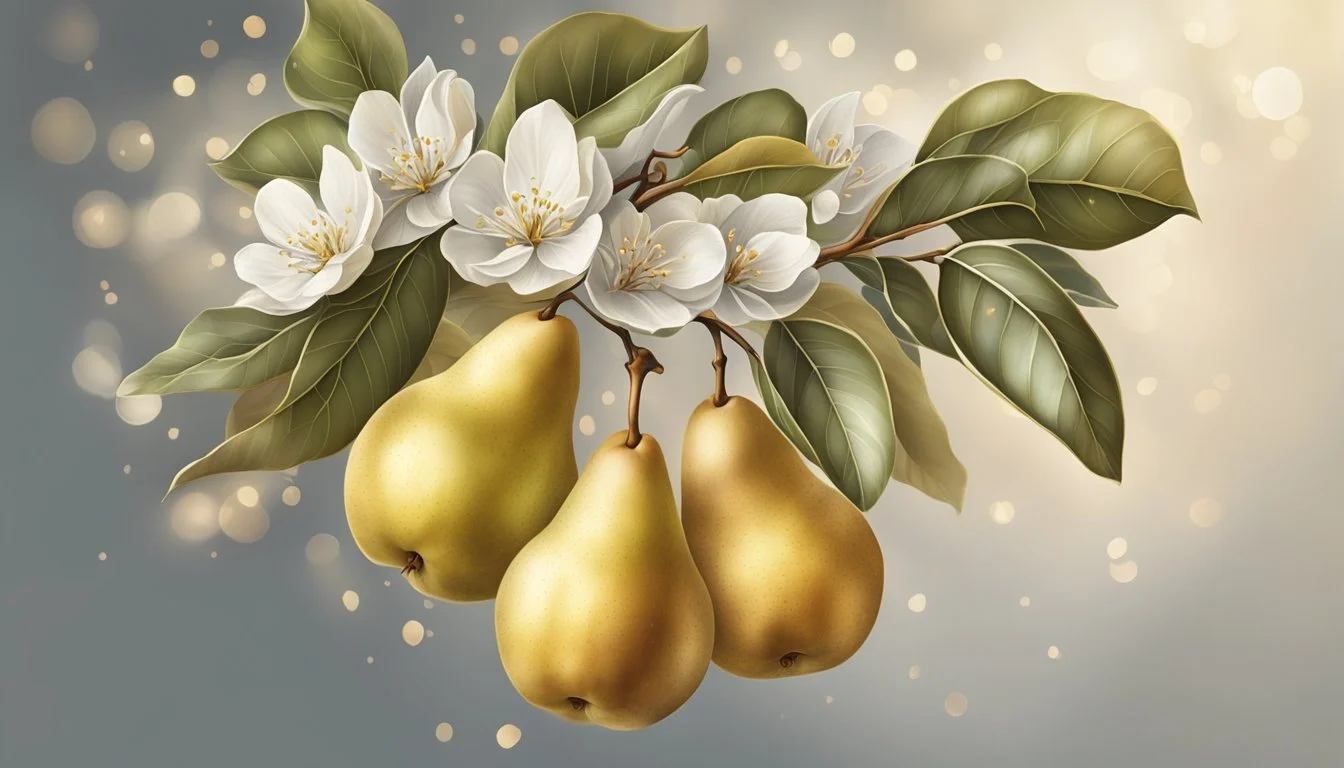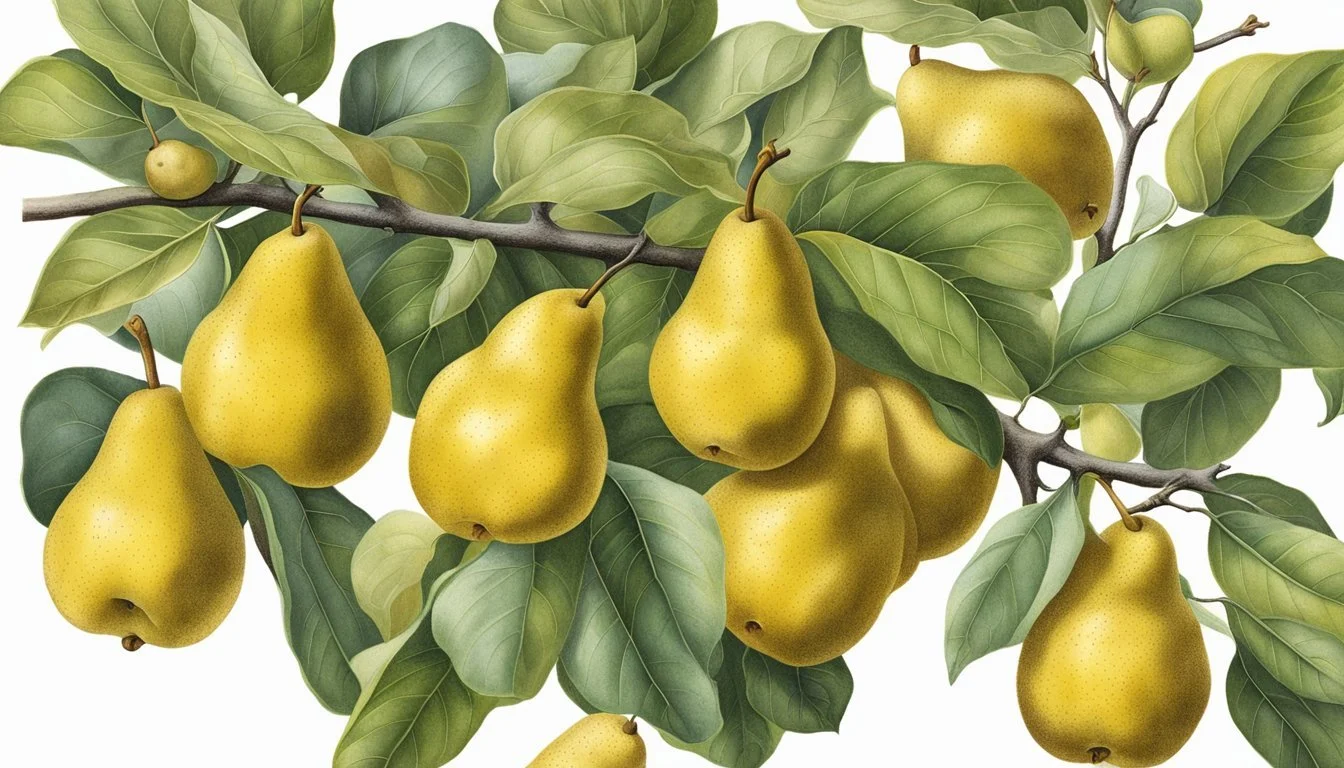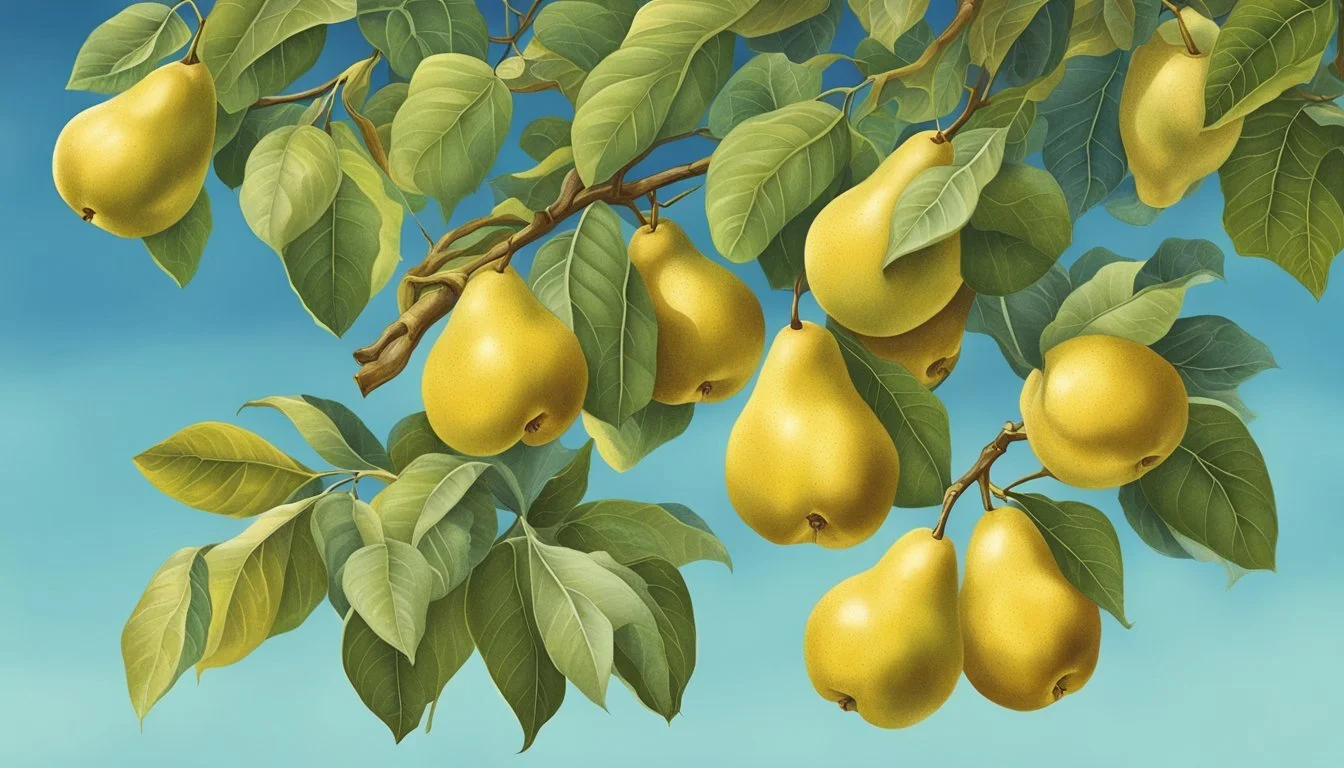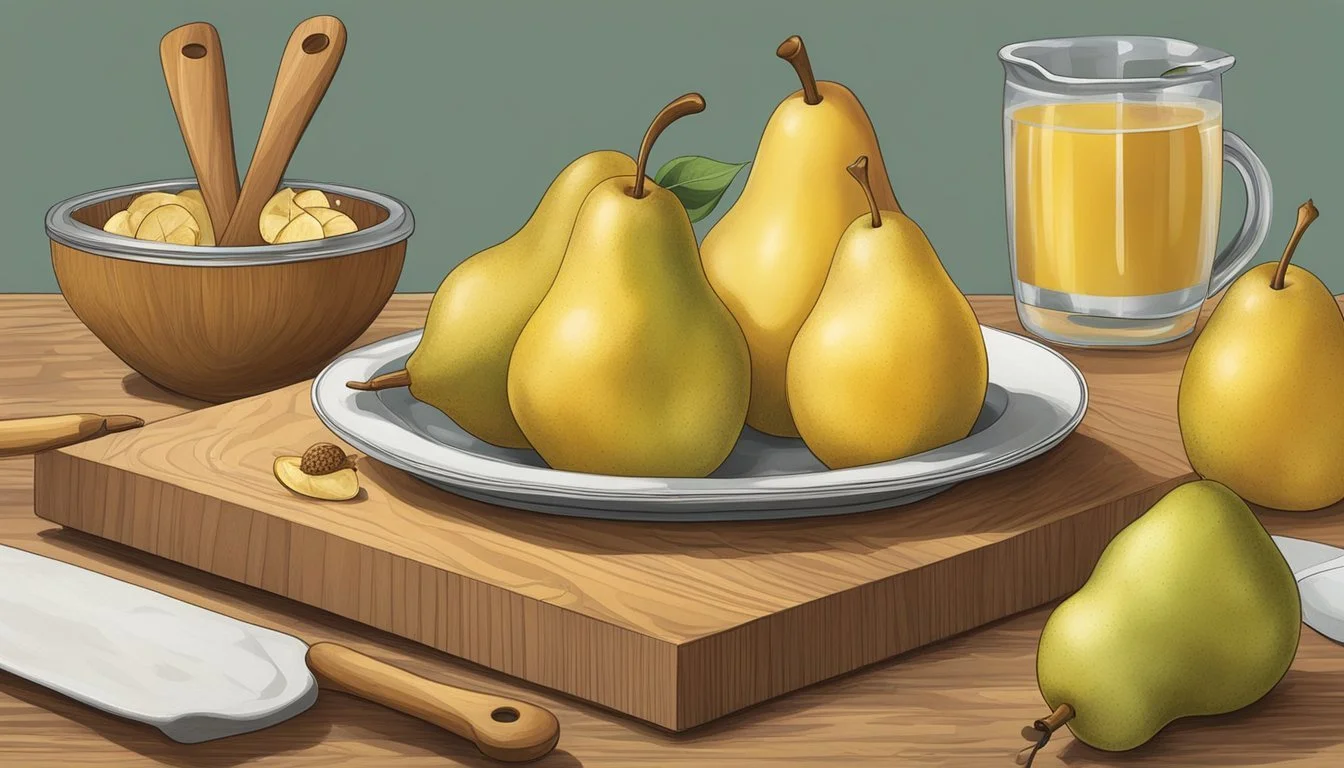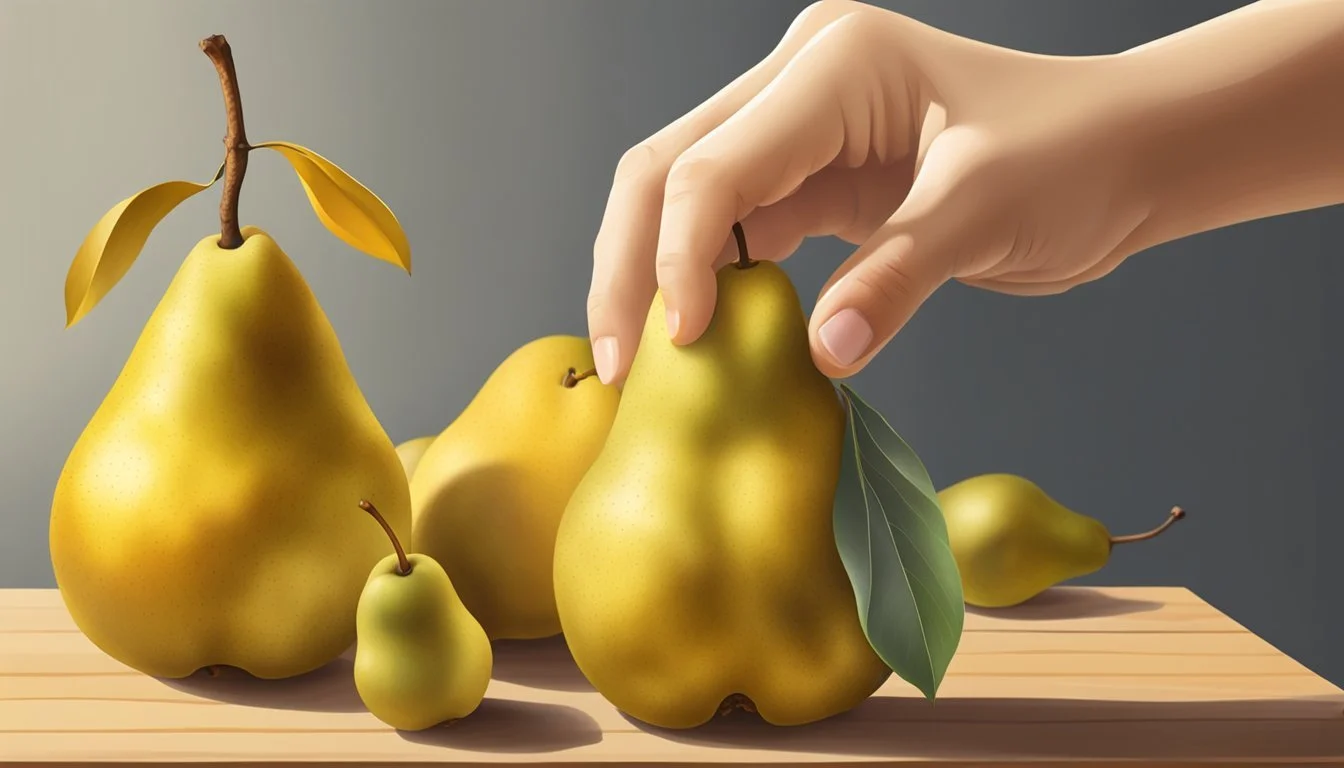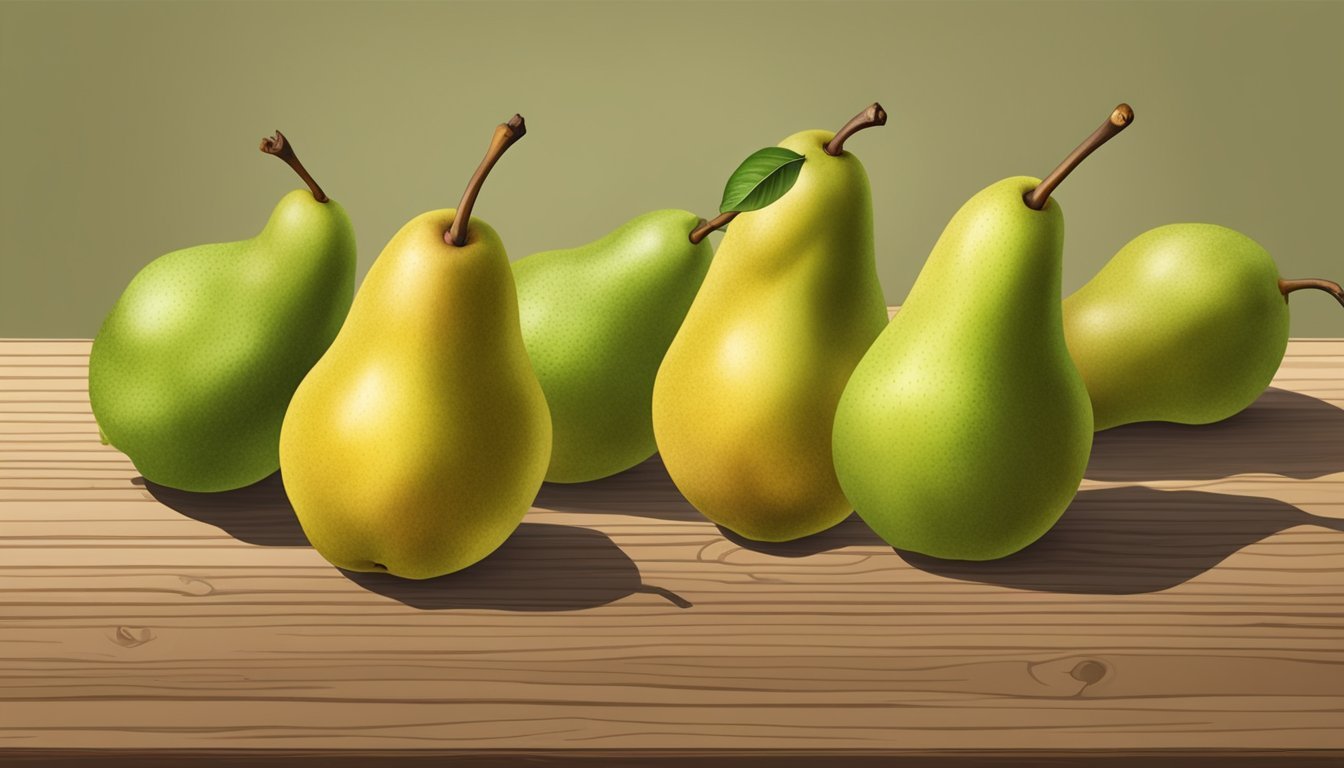How to Tell if Winter Nelis Pears Are Ripe
Your Ultimate Ripeness Checklist
Determining the ripeness of Winter Nelis pears can be a nuanced process but is crucial for experiencing the fruit at its peak of flavor. Unlike many fruits, pears, including the Winter Nelis variety, ripen off the tree. If left to ripen on the branch, they can become mushy at the center due to their unique ripening pattern from the inside out. Therefore, it's essential to pick Winter Nelis pears when they are still hard and then allow them to ripen to achieve that signature sweet and juicy taste.
The challenge for pear enthusiasts and gardeners alike is recognizing when the pear has reached its perfect ripeness. Winter Nelis pears are known for their creamy flesh and rich aroma, characteristics that develop fully after the proper storage and ripening process. To ensure you enjoy the best of what this pear has to offer, there are several telltale signs of ripeness. Texture, fruit color, and subtle changes at the stem end are key indicators that signal when a Winter Nelis pear is ready to be savored.
Key Takeaways
Pears ripen off the tree and should be picked when hard.
Winter Nelis pears have creamy flesh and a rich aroma when ripe.
Indicators of ripeness include changes in texture, color, and the stem end.
Understanding Winter Nelis Pears
Winter Nelis pears are a distinguished fruit variety known for their exceptional taste and storage qualities. Originating in Belgium, these pears are a valuable addition to the category of European pears, cherished for both fresh and dessert use due to their sweet flavor and creamy flesh.
Historical Background
Winter Nelis is a variety of European pear (Pyrus communis), first cultivated in Belgium by a pomologist named Jean Charles Nelis. The fruit achieved prominence in England before spreading to the United States, where it gained popularity for its late-season harvest and long storage potential.
Botanical Profile
The Winter Nelis pear tree, being a cultivar of Pyrus communis, is a deciduous tree that can reach up to 25 feet in height. It thrives in fertile, well-drained soil and requires full sun exposure, which consists of at least six to eight hours of direct sunlight daily.
Characteristics of Winter Nelis
Winter Nelis pears are characterized by their:
Appearance: A typical pear shape with green to yellowish skin.
Taste: A rich sweet flavor enriched by a noticeable aroma.
Texture: Creamy flesh with very little crunch.
Ripeness: These pears are typically harvested slightly under-ripe and are known for ripening off the tree, avoiding the risk of over-ripening which can lead to a loss of texture and flavor.
Not usually confused with Asian pears, Winter Nelis is firmly rooted in the European pear family, making it a preferred dessert pear for various culinary applications.
Cultivation and Care
A successful growth period for Winter Nelis pears hinges on ideal planting conditions, consistent pruning and maintenance, and vigilant disease and pest management to ensure the healthy development of the pear trees.
Planting and Growing Conditions
Pear trees thrive in locations where they receive full sun—at least 6-8 hours of direct sunlight daily. The optimal time for planting is early spring, when the risk of frost has passed. For Winter Nelis pear trees:
Soil: Well-drained soil is essential to prevent root rot.
Watering: Maintain consistent watering, especially during dry spells. Using a hose to provide a deep watering encourages healthy root growth.
Fertilization: In early vegetative growth stages, a nitrogen-heavy fertilizer can promote healthy foliage. However, excessive use should be avoided as it can lead to reduced fruit production.
Pruning and Maintenance
Pruning is a necessary step to maintain the health and productivity of Winter Nelis pear trees. Prune in late winter when the tree is still dormant. Key practices include:
Removing damaged, dead or diseased wood to prevent infections like fire blight.
Thinning out dense areas to allow sunlight and air circulation, reducing the risk of disease.
Cutting back branches to maintain a manageable tree shape and size, which facilitates easier harvesting.
Disease and Pest Management
Pear trees are susceptible to certain diseases and pests which can impact their health and fruit production:
Fire Blight: A bacterial disease that can rapidly damage pear trees. Remove affected branches and avoid overhead watering to limit its spread.
Pests: Regularly inspect for signs of pests and treat with appropriate methods if detected.
Hygiene: Keep the area around the pear trees clean, removing any fallen fruit or foliage which can harbor diseases or pests.
Ripening and Harvesting
In the lifecycle of Winter Nelis pears, understanding the stages of ripeness is crucial for ensuring quality and flavor. Ripeness indicators, such as slight yield to gentle pressure and color changes, guide the harvesting process, which is unique compared to other fruit due to the necessity of off-the-tree ripening.
Identifying Ripeness
Winter Nelis pears transition from a fully green exterior to a yellowish-green hue as they approach ripeness. A ripe pear typically yields slightly to gentle pressure near the stem and base, indicating they are softening and almost ready for consumption. The fruit also emits a fragrant aroma that becomes more noticeable as it ripens.
Optimal Harvest Time
The ideal moment to harvest pears from a Winter Nelis tree is in the late season, usually in late fall. As a guideline, one waits until the fruit can be easily twisted and pulled from the tree without much resistance. If a few fruits begin to fall naturally, it's a clear sign that it's time to harvest the remaining pears.
Unique Ripening Process
Unlike most fruits, Winter Nelis pears do not ripen fully while attached to the tree. They must be picked when still hard and typically before color changes are significant. After harvesting, place them at room temperature to encourage the release of ethylene gas, which is a natural ripening agent. This step is pivotal as it ensures a juicy and flavorful pear that has ripened from the inside out.
Storage and Preservation
When handling Winter Nelis pears, understanding proper storage practices and preservation techniques is crucial. These methods ensure the fruit maintains its distinct sweet, juicy characteristics while preventing a mealy or mushy texture.
Storing for Longevity
Storing Winter Nelis pears at the correct temperature and humidity levels is essential for longevity. For prolonged storage, cold storage is recommended. Pears should be kept at 30°F (-1.1°C) with an 85-90% relative humidity. Under these conditions, Winter Nelis pears can be stored successfully for several months. It is important that the temperature does not drop below this point, as colder temperatures can damage the fruit.
Room Temperature: Before cold storage, pears can be left at room temperature to ripen if they are slightly under-ripe when picked.
Cold Tolerance: Winter Nelis pears have a higher cold tolerance compared to other varieties, making them suitable for long-term cold storage.
Techniques to Preserve Quality
To maintain quality during storage, a few key techniques should be employed:
Paper Bag: For an even ripening process, placing the pears in a paper bag at room temperature can be beneficial before transferring them to cold storage.
Storage Properties: The flesh of Winter Nelis pears is denser, which is a desirable trait that aids in preventing the flesh from becoming mealy.
Monitoring: Regularly check the stored pears for signs of over-ripening or spoilage, and remove any affected fruit promptly.
By adhering to these storage and preservation guidelines, the quality of Winter Nelis pears can be prolonged, ensuring they remain a delight to consume even out of season.
Culinary Uses
Winter Nelis pears are a choice fruit for culinary use due to their sweet and aromatic flavor. They complement both sweet and savory dishes and can be prepared in various ways before being added to recipes.
Preparing Winter Nelis for Cooking
Before cooking, it is essential to wash the Winter Nelis pears thoroughly. To maintain the integrity of their rich flavor, these pears should be cored and cut into uniform pieces—if the recipe requires—to ensure even cooking. Peeling is optional since their skin, although somewhat rough, softens with heat. However, for a smoother texture in dishes like pies or preserves, peeling is recommended.
Recipe Ideas
Winter Nelis pears are versatile and can be incorporated into numerous recipes:
Pies: The pears' firm texture holds up well in baking. Slice them thinly and toss with spices such as cinnamon or nutmeg for a flavorful pie filling.
Preserves: Their sweet profile makes them ideal for preserves. Combine chopped pears with sugar and lemon juice, then simmer until thickened.
Salads: Add a sweet note to salads by incorporating diced Winter Nelis pears.
Roasted Fruits: Roast halved pears with honey to accentuate their natural sweetness.
With their deeply aromatic qualities, Winter Nelis pears elevate any dish they are added to, from classic pastries to innovative savory presentations.
Choosing and Buying Tips
When they select Winter Nelis pears, shoppers should search for firm fruits that exhibit a creamy hue, indicative of their variety. The skin of the pear should be relatively smooth and free from blemishes or bruises.
Seasonality: The Winter Nelis pear is a late-season fruit, typically harvested in the fall to early winter. They may not be readily available year-round, so consumers are advised to look for them during this peak period for the freshest quality.
Texture and Ripeness: To gauge ripeness, one should gently press the neck of the pear. If it yields slightly under the pressure, the pear is ripe and ready to consume. Winter Nelis pears should be juicy and sweet when perfectly ripe. They are known for their rich aroma, which can also serve as a clue to their maturity.
Storage: If the pears are slightly under-ripe at the time of purchase, they can be stored at room temperature until they reach the desired softness. These pears have a good shelf life and can be kept for later use, maintaining their distinctive sweet flavor and aromatic qualities.
For individuals who wish to expedite the ripening process, placing the pears in a paper bag with ethylene-producing fruits such as bananas or apples can be effective. However, it is crucial to monitor them closely to avoid overripening, which leads to spoilage.
By adhering to these guidelines, consumers can confidently select and purchase Winter Nelis pears that will provide a satisfyingly sweet and juicy experience, with a delightful aroma characteristic of this pear variety.
Companion Planting and Pollination
In growing Winter Nelis pears, understanding companion planting and pollination is crucial. They are not self-fertile and require pollinators to produce fruit, while certain companion plants can bolster this process.
Suitable Companion Plants
Companion planting enriches the environment for pear trees in several ways. Sunflowers, for example, are excellent companions, attracting pollinators with their bright flowers. Their ability to break up compact soil and provide mulch material also benefits the overall health of pear trees.
Sunflowers: Attract pollinators, provide mulch, improve soil structure
By choosing the right companion plants, gardeners can create a supportive ecosystem for their pear trees.
Pollination Requirements
Winter Nelis pear trees fall into Flowering Group 4 which indicates their bloom period. They require a different pear variety nearby for cross-pollination. Varieties from Flowering Groups 3, 4, or 5 could serve as effective pollinators given their overlapping blooming times.
Compatible Varieties for Pollination:
Bosc
Comice
Conference
Concorde
The presence of these compatible varieties ensures the transfer of pollen, facilitated by bees and other pollinators, which is necessary for fruit development. It’s vital for growers to plant these companion pear varieties within proximity to enable successful pollination.
Note: All information about flowering groups and specific variety compatibility must be verified with local extension services or nurseries, as regional differences can affect pollination success.
Comparing Winter Nelis with Other Pears
Winter Nelis pears are distinct in their ripening season and flavor profile when compared to other varieties. This section breaks down how they stack up against similar types of pears, with a focus on taste and texture.
Similar Varieties
European Pears: Winter Nelis belongs to the category of European pears, varieties which typically have a soft and buttery flesh when ripe.
Asian Pears: These are generally round and crispier, contrasting with Winter Nelis's softer texture.
Bosc and Comice: Both are European varieties; Bosc bears a firmer texture, while Comice is similarly soft but usually larger than Winter Nelis.
Bartlett and Anjou: Bartlett pears are among the sweetest, with a distinct classic pear flavor, while Anjou pears, available in both red and green, offer a slightly less sweet taste and firmer flesh compared to the Winter Nelis.
Taste and Texture Comparisons
Sweetness: Winter Nelis pears are known for their rich sweetness.
Juiciness: When ripe, they are quite juicy, a common characteristic they share with the Bartlett variety.
Creamy: The texture of a ripe Winter Nelis is creamy, akin to Comice pears, which are valued for their succulent and tender flesh.
Mealy/Mushy: In contrast, Asian pears tend to remain crisp and can be somewhat mealy if overripe, which differs from the smooth consistency of an overripe Winter Nelis pear that becomes mushy if left too long.
Bosc: Bosc pears maintain a firmer texture, making them less susceptible to becoming overly soft.
By examining these characteristics, one can appreciate the unique qualities of Winter Nelis pears in relation to other varieties, providing a better understanding of when they may be ripe and at their peak for consumption.
Propagation Methods
A successful propagation of Winter Nelis pears hinges on the choice of rootstock and grafting techniques. These processes are pivotal to the future height, health, and fruit production of the pear trees.
Rootstock Selection
Rootstock serves as the foundation of grafted pear trees. The type of rootstock chosen will ultimately determine the tree's vigor, resistance to disease, and overall height. When selecting rootstocks for Winter Nelis pears, one must consider compatibility with the specific pear variety and the desired size of the tree. Dwarfing rootstocks are popular for those seeking a more manageable tree height, which typically leads to pear trees reaching between 15 to 20 feet at maturity. These rootstocks also contribute to earlier fruit production.
Grafting Techniques
Grafting is a vegetative propagation method central to producing true-to-type Winter Nelis pear trees. The process involves fusing a scion of the desired pear variety onto a compatible rootstock. There are several grafting techniques, but for pear trees, the most commonly used are:
Whip and Tongue Grafting: An effective method that joins a rootstock and scion of similar diameters, using precise cuts that allow for a large area of cambium to contact.
Budding: A technique where a bud is inserted into a rootstock. It's typically performed in late summer and is known for its high success rate in pears.
Throughout the process, it's crucial to carry out these techniques with sterile tools to prevent disease transfer. Post-grafting, a careful watch and a manual geared towards the care of grafted fruit trees can guide one through the necessary aftercare to ensure the grafted union heals effectively and the young tree establishes well.

